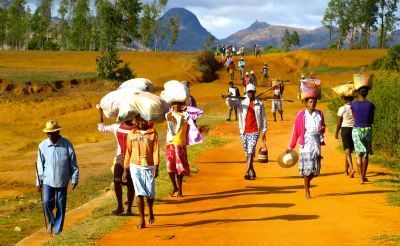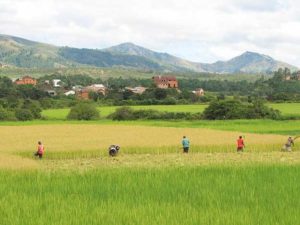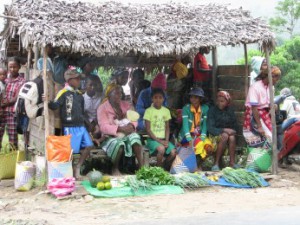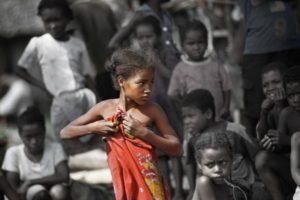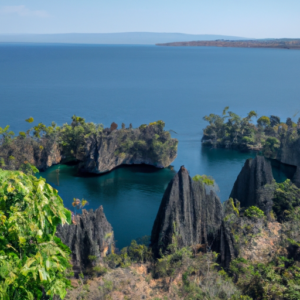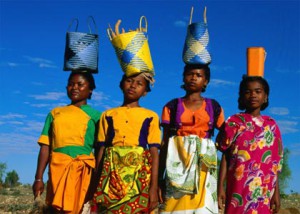
The Cheerful Serenity of the Population
Agriculture is the foundation of livelihood for most Malagasy people and shapes the image of the island. There is little industry, and even large cities appear more like sprawling settlements to European visitors. Not even Madagascar’s capital, Antananarivo, presents a typical urban image, but rather rises in a serene and peaceful manner.
In Madagascar, agriculture is the foundation of the economy, with vast expanses of rice fields highlighting the fact that nearly 80% of the population relies on agriculture for their livelihood. Rice cultivation, in particular, plays a significant role in the agricultural sector. Learn more about the daily diet, the importance of rice, and the significance of Zebu cattle in Madagascar at Eating and Drinking in Madagascar and Zebus in Madagascar.
Agriculture as the Foundation of the Economy
Daily Life in Madagascar
With agriculture playing a crucial role in providing for the Malagasy people, it may come as a surprise that only 20% of the country’s land is suitable for farming. The cultivation of wet rice, in particular, is challenging given the existing climatic conditions, although the famous rice terraces of the highlands
, mainly built by the Betsileo people, offer a breathtaking panorama. However, as rice is an essential part of the population’s diet, significant efforts are made across the country to enable rice cultivation. It has been proven that the island also provides conditions for growing numerous other plants. So, the Malagasy people continue to invest in agriculture to ensure food security for their communities. In the highlands of Madagascar, a rather moderate climate prevails, allowing practically all crops to thrive, including apples, pears, citrus fruits, and various vegetables. Exotic products like pineapples and papayas can also be grown in the highlands. On the other hand, the hot, coastal regions showcase the diversity of precious “colonial goods” that once made their way to Europe: vanilla, coconut, and lychee plantations, as well as cloves, sugarcane, fine cocoa, and coffee can be found here. These plantations can be visited during an individual trip or one of the tours along the East Coast.
every place has at least a small market culture. Due to the variety of agricultural products, visiting a market is a celebration for all senses each time. Fresh fruits and vegetables are offered in all shapes and colors. There, people can enjoy the vibrant atmosphere and the diverse range of products available.
Observing and understanding the circumstances that determine people’s daily lives and what they produce is best done by observing. Where necessary, Malagasy markets are also “specialized” or spatially separated. For example, the capital Antananarivo had until a few years ago the largest open-air market in the world, the legendary Zoma of Tana. However, due to its size, the Zoma was hardly controllable by the authorities. As the administration lost track of the stand fees to be paid and could no longer effectively combat pickpockets, the Zoma was regulated, limited, and furthermore divided into various “districts”.
Even in rural areas, markets are adapted to the needs of the local population and are an important part of daily life. The cattle markets are among the most interesting special markets, especially the Zebu markets held regularly in Ambositra, Ambalavao, Belo-sur-Tsiribihina, or Ambovombe, attracting a large number of two- and four-legged actors each time. For visiting various markets, a 14-day trip from Antananarivo to Tulear is recommended.

